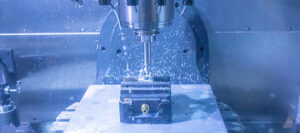How to Design Your Own Custom Bronze Statue: Tips for Success
Designing a custom bronze statue combines creativity with craftsmanship. From defining the concept and building

Designing a custom bronze statue is a unique way to capture emotions, honour legacies, or create art that lasts for generations. Bronze is known for its strength, fine detailing, and timeless appeal. Whether it is a tribute to a loved one or a landmark piece for a public space, a statue crafted in bronze stands as a permanent reminder of what it represents. To achieve the best results, planning and precision are essential. This guide outlines the crucial steps in designing a statue that seamlessly combines creativity with craftsmanship, ensuring your idea evolves into a lasting work of art.
Define the Concept Clearly
Every statue begins with an idea. Identify the subject, size, and purpose of your project. Ask whether it will be placed in a private space, a community area, or a cultural site. Collect sketches, photographs, or even digital renderings to refine your vision. The clearer the concept, the easier it becomes to work with artists and foundries during production.
Build a Model for Precision
After the concept is established, the next stage is creating a clay or wax model. This scaled version ensures correct proportions and allows for adjustments before moving on to the final piece. For larger statues, an armature provides structural support. Working through a model not only saves costs but also allows room for creativity and improvement before the casting process.
Learn the Casting Process
The lost-wax method remains the most trusted method for producing custom bronze statues.
- A wax version is made from the mould.
- Ceramic or plaster layers form a durable shell.
- Wax is melted out, leaving space for molten bronze.
- Bronze is poured, cooled, and the shell is removed to reveal the form.
This technique captures fine details while ensuring durability.
Focus on Finishing Touches
Once cast, the statue requires refining. Artists remove seams, smooth surfaces, and weld parts if needed. Patinas are applied to achieve specific colours, ranging from traditional earthy tones to modern shades. A carefully finished surface enhances both the beauty and character of the statue, ensuring it has a strong presence wherever it is installed.
Collaborate with Skilled Foundries
Selecting the right foundry is crucial. Experienced professionals not only execute technical steps but also guide design decisions and ensure safety throughout the production process. Share clear expectations regarding timelines, budget, and finishing options. Strong collaboration leads to a smooth process and a high-quality result.
Conclusion
Designing a custom bronze statue combines creativity with craftsmanship. From defining the concept and building a model to mastering the casting and refining finishes, every stage matters. Working with skilled artisans and foundries helps ensure precision and durability. A thoughtfully designed statue becomes more than an object. It transforms into a symbol of memory, respect, or celebration. By focusing on each step, you can transform an idea into a timeless masterpiece that endures and holds meaning for generations.




